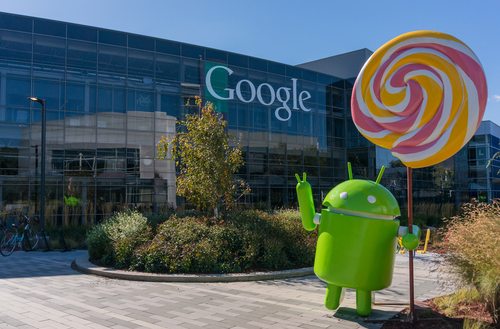
Asif Islam / Shutterstock.com
We all know that digital marketing is the most valuable advertising tool since television. (Some, including me, would say it’s even more valuable.) Businesses have thrived through using the practical data that comes with digital advertising, and most have even conjured real returns as a result. Long gone are the days of billboards and direct mail, at least for some.
Some nonprofit organizations have struggled to make the leap into digital, since advertising media like direct mail have been their only source of yielding returns (even at low levels) for decades. Since nonprofits rely mostly on the charity of others, it’s nearly impossible to find funding for new sources of advertising. It wasn’t that long ago that nonprofits simply couldn’t be found online.
Google changed all of that with the Ad Grants program. By generously giving $10,000.00 a month in free search advertising to any qualifying NPO, Google started a chain reaction that continues to have an impact today. Since the Ad Grants program was introduced, nonprofits have begun to see the value in digital advertising and are now taking advantage of other tools, such as social media and video. In providing nonprofits with a vast budget all but unobtainable for most, Google (true to form) has changed the game. Unfortunately, we need Google to do more.
Mind you, ten thousand dollars a month to advertise on the world’s foremost provider of digital traffic is nothing to scoff at. I have it on good authority that most small- to medium-sized for-profit businesses can’t wrangle up that kind of budget for an entire fiscal year, let alone each month. Nonetheless, there are frustrating limitations:
- –Position 1 goes to those who pay, regardless of Ad Rank. Fair enough.
- –YouTube, Search Partners and Display are off limits. Fair enough.
- –$2.00 maximum CPC bid. No exceptions.
There are a plethora of limitations, but the max CPC bid of $2.00 is the primary hindrance to the success of many Google Ad Grant accounts, especially those promoting local community-oriented nonprofits.
It feels wrong to complain about that, since the $10K a month in free advertising is such an amazing opportunity (not to mention the GrantsPro program, which offers an additional $30K per month to qualifying nonprofits). As someone who has made a career in helping nonprofits with their Ad Grant efforts, I almost feel guilty bringing it up. Frankly, any organization getting $10K a month in free advertising should consider themselves lucky. Facebook, Bing, and Yahoo! don’t offer similar programs—only Google. As the old adage goes, you don’t look a gift horse in the mouth. So stop the complaining…right?
Wrong. As the world of search becomes more saturated with industry experts and competition, so too does demand and cost. The $2.00 CPC limit is a nuisance to large nonprofits but is virtually detrimental to smaller community-based NPOs. Some of these organizations serve as essential resources to local citizens, and yet cannot be easily found by the most effective search tool on the Internet.
SEM professionals know that when you can only bid up to a certain amount, you must compensate with other factors: quality score, high quality original content, compelling ad copy, and so on. All can be easily attained, but even miraculous CTRs can fall short in accomplishing anything above position 4. When local nonprofit organizations are fighting for recognition against for-profit businesses, which have no limit on CPC bidding, it’s akin to pulling teeth out of a lion—especially when the queries that are being fought over are less than relevant to national for-profit competitors.
Consider the following hypothetical example: A local animal rescue organization hoping to promote their free adoption services online is participating in the Google Ad Grants program. Below is a sampling of potential keywords:
Sign up for our free newsletters
Subscribe to NPQ's newsletters to have our top stories delivered directly to your inbox.
By signing up, you agree to our privacy policy and terms of use, and to receive messages from NPQ and our partners.
| Keyword |
Suggested Bid |
| dog adoption online |
$2.09 |
| adopting a pet |
$2.49 |
| adopt a pet websites |
$3.44 |
| kitty for adoption |
$3.67 |
Note that the suggested bids of all the keywords are above $2.00. Each of the above terms is a relevant, high-yield term that could provide valuable results. However, this organization would be unable to competitively bid on any of the aforementioned terms due to the limits set by Google Ad Grants. More importantly, this limits the reach of the organization in their community and decelerates the process of getting rescued animals into the arms of loving families.
Jennifer Stritch of Depression Bipolar Support Alliance Houston, a local community support and resource provider for people suffering from depression, is a current Google Ad Grants recipient. She says, “We are very grateful for the grant, but our ultimate goal is to fulfill our mission. It is disappointing that we have to choose between informing large numbers of people about our free resource or a lower budget line item. A large number of people find our free support groups through the Internet and we know that we could reach more people again if we didn’t have the CPC limit.”
While specific SEM strategies can compensate for a limited CPC bid, even the most relevant search query results do not always prevail. Charity-funded nonprofits are forced to bottleneck resources in order to keep their missions alive while their for-profit counterparts can utilize myriad financial resources to address a poor ad rank. Meanwhile, the $2.00 CPC limit stifles nonprofits’ community reach, thereby hindering their ability to fulfill their mission.
Those of us working in the nonprofit sector understand that companies like Google ultimately need to make a profit. After all, it’s those profits that provide NPOs with their much needed funding, be it from corporate or individual giving. Google’s paying customers should be given priority in any given search auction without question, but nonprofits need additional support in the auction pool. This support, in the form of a $3.00 CPC limit in the Google Ad Grants program (a whopping $1.00 increase from the current bid max), would allow small community-based nonprofits to get a vying position for high search volume queries, thus furthering their ability to maximize on reach and accomplish their organizational goals. Keep in mind these goals do not include fundraising or making a profit or successful investing. In fact, the various missions and goals of all NPOs might be summarized in one sentence: Make the world a better place. That might sound corny to some, but it goes to the very heart of what nonprofits stand for, and $3.00 can put them one step closer to that objective.
The Google Ad Grants program is an amazing resource for nonprofits—more than that, it’s a blessing. But it isn’t flawless, and the most critical issue is the $2.00 CPC bid stipulation. Nonprofit organizations are doing important work, serving communities across the country and throughout the world. Large nonprofits may choose to forego the Google Ad Grants program to avoid the CPC limitation or compensate with alternative ad platforms, but sadly, those options aren’t always feasible for small community-based organizations. Adjusting the current CPC bid limit to $3.00 would go a long way in preventing NPOs from having to choose between utilizing the grant to free up resources and adjusting their limited budgets to accommodate for online advertising. Nonprofit organizations deserve more equitable access to digital marketing as a resource to reach their audience and fulfill their missions. Another dollar from Google can make that happen.
John Stancliffe is a nonprofit digital marketing expert based in Dallas. He is the Search Marketing Director for Media Cause; over the past ten years, he has worked with dozens of nonprofits to raise funds or fulfill missions.










